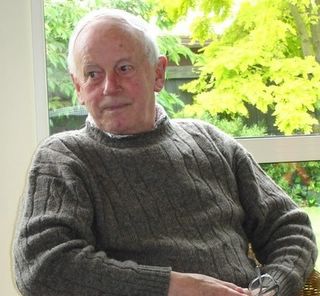To the Emerald Isle
Our
trip to Ireland in 1984 was more than a tourist choice. It was a
real attempt to visit the birthplaces of our ancestors in Cork and
Sligo. But little did we realize just how much the whole month in
the Republic would endear us to the Irish people, and what great
memories we still have of that green and pleasant land.
We
had flown from NZ to Greece, where we lived for three weeks on
Skiathos before travelling overland via Volos, Trikkala, Meteora and
Corfu, where we activated our Eurail passes. These took us to Italy,
Switzerland, Austria and France, and so on the last day of the passes
we boarded a ship at Le Havre bound for Ireland.
 |
| Dolmen at Carlow |
When
I first met my wife Norah's parents, Charlie and Isa Donald, I
imagined that they were both totally Scottish, judging from their
accents and the stories of their birth and young life in Glasgow, but
little I knew about her mother's interesting history and lineage.
Her father was John Orange, probably from Londonderry originally, and
her mother Elinor Murphy, the oldest of a Cork family. So to say
that Norah was half-Irish and half-Scottish is as correct as you can
be, for her whole maternal side is from Cork, and her paternal side
Donalds of the Isles.
 |
| The Old Cork Asylum |
In
the early 1890s, Hanora and Timothy Murphy moved to Glasgow, where
the youngest of their children were born, and when Elinor was hardly
a teenager. But she was to die when only 20, leaving her only child,
the 2-year-old Isa, who was then brought up by her grandparents
Hanorah (aka Norah) and Tim. Isa was loved and treated by that
family as one of their own, as indeed she was, and her uncles, more
like brothers in age, would look out for her and protect her no
matter what. She always said she felt safe in the Gorbals, and
everyone knew her. Her father, John Orange, was a seaman, who in
later years took up his mother's maiden name of Laverty, which even
appears on his funeral record. Isa often accompanied her
grandmother back to Cork on holidays, and Hanora actually died there
around 1910.
 |
| From Killarney to the Gap of Dunloe |
My
paternal grandmother Sarah Tooey came from Sligo to NZ around 1880
“into service”, and spent the rest of her life in Dunedin. So
though we were bound for Cork and Sligo as essential calling-places,
we went north to Dublin to begin our Irish ramble. We may have
imagined it, but from that very first day Norah seemed to be accepted
and recognized as Irish, people often being surprised to learn that
she was a New Zealander. We must have walked miles around Dublin in
those first few days, and one of the wonderful days we spent watching
the grand final of Gaelic Football at Croke Park. We had invited an
Australian girl to join us, and she knew nothing about the game,
except that it was something like Australian Rules. Two friendly
locals stood right behind us, and focussed their attentions on our
attractive companion, explaining in detail every move on the pitch.
The ground was sold out, and reminded us of the boisterous Lancaster
Park crowds back home.
Our
next aim was Waterford, and a possible visit to the crystal factory.
We had bought in NZ Irish Rambler tickets, which gave us prepaid
travel on any bus or train in the country. We had heard that Carlow,
on the way to Waterford, was the locale of an ancient dolmen, and
there we alighted, leaving our luggage at the station and walking ..
walking .. walking.. the several kilometres to Browne's Dolmen, and
it was well worth the effort. On the way back we were treated to a
first-hand view of that marvellous Irish contest, where the
contestants throw underarm a solid ball from point to point across
country, the winner being the thrower who gets there in the smallest
number of throws. We had seen a demonstration in our own backyard by
an Irish friend a few years before when his underarm throw of an old
tennis ball almost caved in the door of our toolshed! It is done
with some kind of timing like karate, and it is almost impossible to
believe the speed they generate.
We
eventually got to Waterford, the home town of one of our best
friends, and so enjoyed our factory tour. We bought three
beautifully cut decanters, and trusted the factory people to freight
them home to our family, which they did without fault.
 |
| The Rock of Cashel |
And
so to Cork, of which we had heard so much from Norah's mother, where
we settled in to a B & B on Military Hill, very much in that part
of the city known in the 19th century by Norah's Murphy ancestors.
Further up the hill we found Gardner's Hill and the Old Youghal Road,
even closer to where they all lived. Another happy discovery in
Cork was Kelly's Kitchen, in one of the main streets, where we joined
masses of the ordinary people at lunch on long tables with white
cloths. It was a great working-class restaurant, where you could sit
beside anyone, and enjoy not only the wholesome meal, but as well the
lively chat and conversation that seems typical of this country.
One woman we met more than once had explained that she worked “at
the macket”, and hoped that we would visit her there in the street
later in the week. That we did, and got two huge red apples for our
pains. She was delighted that we had thought her important enough to
seek out, and so she was.



0 Comments:
Post a Comment
<< Home